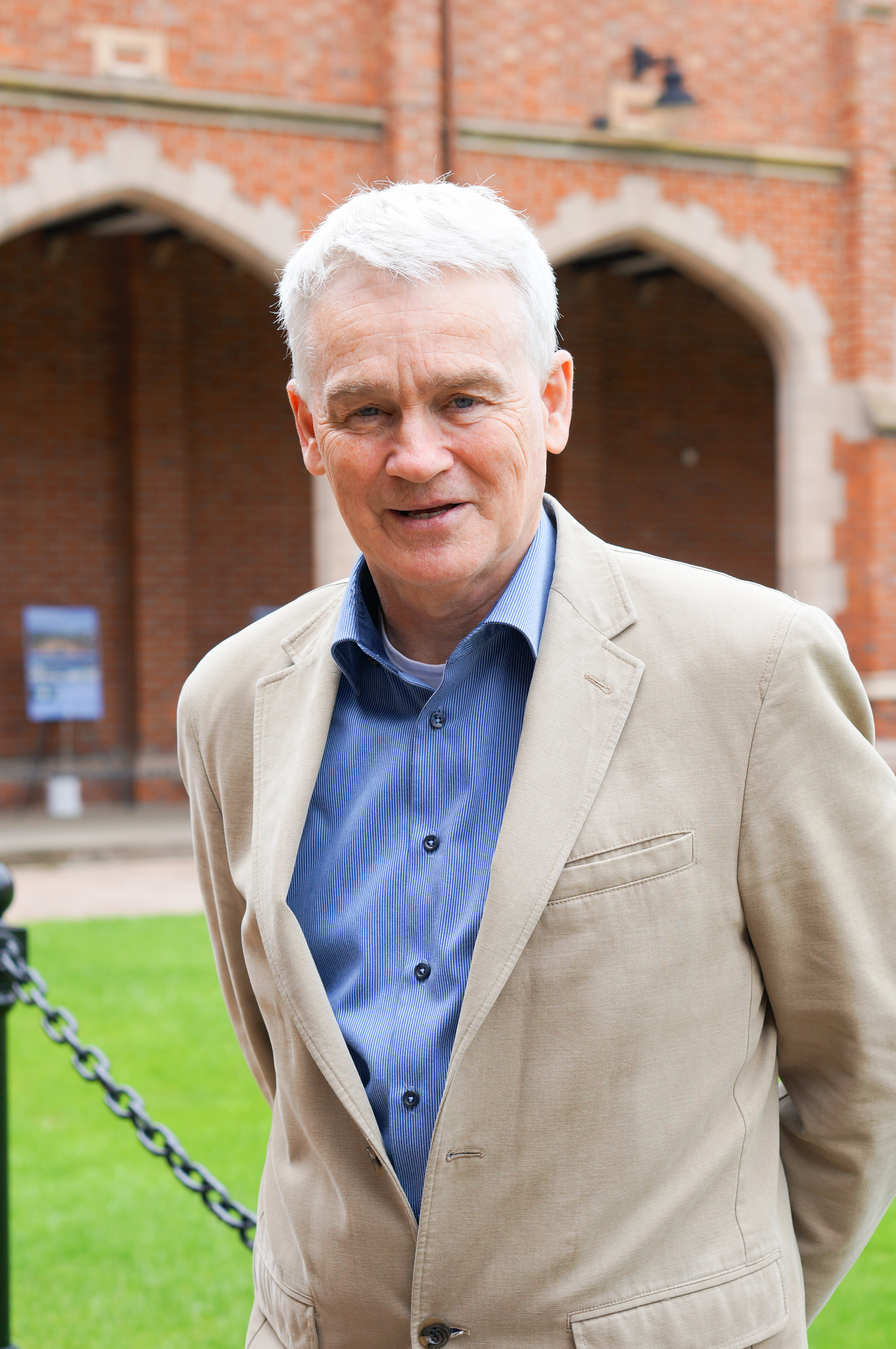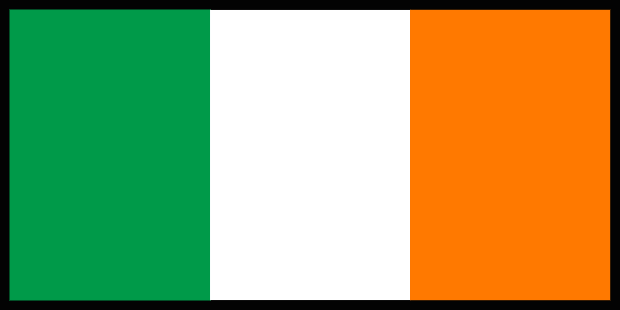|
Pádraig McKearney
Pádraig Oliver McKearney (18 December 1954 – 8 May 1987) was a Provisional Irish Republican Army (IRA) paramilitary. He was killed during a British Army ambush at Loughgall, County Armagh in May 1987, aged 32. He had 15 years of service as an IRA Volunteer when he was shot dead at Loughgall, making him one of the most experienced IRA Volunteers ever killed by British forces. Background Pádraig McKearney was raised in Moy, County Tyrone, in a staunchly Irish republican family. Both his grandfathers had fought in the Irish Republican Army during the Irish War of Independence, his maternal grandfather in south County Roscommon and his paternal grandfather in east County Tyrone. He was educated at local Catholic schools in Collegeland, County Armagh, Collegeland and Moy, and later went to St Patrick's Academy, Dungannon. IRA career He joined the Provisional IRA and was first arrested in 1972 on charges of blowing up the post office in Moy. He spent six weeks on remand, but wa ... [...More Info...] [...Related Items...] OR: [Wikipedia] [Google] [Baidu] |
Provisional Irish Republican Army
The Irish Republican Army (IRA; ), also known as the Provisional Irish Republican Army, and informally as the Provos, was an Irish republican paramilitary organisation that sought to end British rule in Northern Ireland, facilitate Irish reunification and bring about an independent, socialist republic encompassing all of Ireland. It was the most active republican paramilitary group during the Troubles. It saw itself as the army of the all-island Irish Republic and as the sole legitimate successor to the original IRA from the Irish War of Independence. It was designated a terrorist organisation in the United Kingdom and an unlawful organisation in the Republic of Ireland, both of whose authority it rejected. The Provisional IRA emerged in December 1969, due to a split within the previous incarnation of the IRA and the broader Irish republican movement. It was initially the minority faction in the split compared to the Official IRA, but became the dominant faction by 1972. T ... [...More Info...] [...Related Items...] OR: [Wikipedia] [Google] [Baidu] |
Tommy McKearney
Tommy McKearney (born 1952) is a former Irish volunteer in the Provisional Irish Republican Army who took part in the 1980 hunger strike. Background McKearney was born in Lurgan in the north-east of County Armagh, but he was raised in The Moy, a village in the south-east of County Tyrone, just across the River Blackwater from County Armagh. He was born into a family with a long tradition of Irish republicanism. Both his grandfathers had fought in the Irish Republican Army in the Irish War of Independence, his maternal grandfather Tom Murray being an Adjutant General in the North Roscommon Brigade. McKearney lost three of his brothers during the Northern Ireland Troubles. Sean was killed by his own bomb in 1974, Pádraig was killed by the Special Air Service (SAS) in the Loughgall Ambush on 8 May 1987, and Kevin, a non-paramilitary, was murdered by the Ulster Volunteer Force (UVF) in 1992 while working in the family's butcher shop. His sister, Margaret, was the subject of an u ... [...More Info...] [...Related Items...] OR: [Wikipedia] [Google] [Baidu] |
Provisional Irish Republican Army Arms Importation
Provisional Irish Republican Army arms importation began in the early 1970s. With these weapons it conducted an armed campaign against the British state in Northern Ireland. American arms In the early stages of the Troubles, during the period 1969–1972, the Provisional IRA was poorly armed. They had access to weapons remaining from the IRA's failed Border Campaign between 1956 and 1962, but these weapons were outdated and unsuitable for a modern campaign. After 1969, and the split with the Official IRA, the Provisional IRA gained control of a majority of the stockpiled weaponry still held from previous IRA campaigns. It found that the stockpiles consisted mostly of pre-World War II small arms ranging from Lee–Enfield and M1 Garand and M1 carbine rifles, to MP40 and Thompson submachine guns (SMG), plus Bren light machine guns (LMG) and Webley revolvers. The Garands were used in IRA operations as late as the summer of 1976, when a British army patrol in South Armagh was fir ... [...More Info...] [...Related Items...] OR: [Wikipedia] [Google] [Baidu] |
Special Air Service
The Special Air Service (SAS) is a special forces unit of the British Army. It was founded as a regiment in 1941 by David Stirling and in 1950, it was reconstituted as a corps. The unit specialises in a number of roles including counter-terrorism, hostage rescue, direct action and covert reconnaissance. Much of the information about the SAS is highly classified, and the unit is not commented on by either the British government or the Ministry of Defence due to the secrecy and sensitivity of its operations. The corps currently consists of the 22 Special Air Service Regiment, the regular component, as well as the 21 Special Air Service Regiment (Artists) (Reserve) and the 23 Special Air Service Regiment (Reserve), which are reserve units, all under the operational command of United Kingdom Special Forces (UKSF). Its sister unit is the Royal Navy's Special Boat Service which specialises in maritime counter-terrorism. Both units are under the operational control of the Directo ... [...More Info...] [...Related Items...] OR: [Wikipedia] [Google] [Baidu] |
The Birches, County Armagh
The Birches is a small village in northern County Armagh, Northern Ireland. It is 6 miles northwest of Portadown, close to junction 12 on the M1 Motorway and to the southern shore of Lough Neagh. In the 2001 Census it had a population of 150. It is within the Armagh City, Banbridge and Craigavon council area. The Birches is part of the civil parish of Tartaraghan, and most of the settlement is within the townlands of Ballynarry and Clonmakate. Two parts to the village can be distinguished, that at Robinstown Road, centred on a public housing estate and a school, and that part adjacent to the M1 junction. Places of interest *Stonewall Jackson's ancestral site is at Waugh's Farm, The Birches (Jackson also had roots in Coleraine, County Londonderry). Education *Birches Primary School ReferencesNI Neighbourhood Information System [...More Info...] [...Related Items...] OR: [Wikipedia] [Google] [Baidu] |
Attack On Ballygawley Barracks
On 7 December 1985 the Provisional Irish Republican Army (IRA) attacked the Royal Ulster Constabulary (RUC) base at Ballygawley, County Tyrone. Two RUC officers were shot dead and the base was raked with gunfire before being destroyed by a bomb, which wounded a further three officers. Background In 1985, Patrick Kelly became leader of the Provisional IRA East Tyrone Brigade. He, along with East Tyrone Brigade members Jim Lynagh and Pádraig McKearney, advocated using flying columns to destroy isolated British Army and RUC bases and stop them from being repaired. The goal was to create and hold "liberated zones" under IRA control that would be gradually enlarged. Although IRA Chief of Staff Kevin McKenna turned-down the flying column idea, IRA Northern Command approved the plan to destroy bases and prevent their repair. In that year alone there were 44 such attacks. Among the most devastating was the mortar attack on Newry RUC barracks in March. The attack The attack involve ... [...More Info...] [...Related Items...] OR: [Wikipedia] [Google] [Baidu] |
Patrick Joseph Kelly
Patrick Joseph Kelly (19 March 19578 May 1987), was an Irish commander of the East Tyrone Brigade of the Provisional Irish Republican Army during the mid-1980s until his death in a Special Air Service ambush at Loughgall, County Armagh in May 1987. Background The oldest child in a Roman Catholic family of five, Kelly was born and lived in Carrickfergus until he was 16 before the family returned to live in Dungannon. Paramilitary activity Kelly became a member of the Provisional Irish Republican Army at the beginning of the 1970s and became one of the most experienced IRA men in Tyrone. He was arrested in February 1982 based on testimony from an informant named Patrick McGurk but was released in October 1983 due to lack of evidence, after a trial that lasted fifteen minutes. In 1985, Kelly became brigade commander in East Tyrone and began developing tactics for attacking isolated Royal Ulster Constabulary (RUC) bases in his area. Under his leadership the East Tyrone Brigad ... [...More Info...] [...Related Items...] OR: [Wikipedia] [Google] [Baidu] |
British Army
The British Army is the principal land warfare force of the United Kingdom, a part of the British Armed Forces along with the Royal Navy and the Royal Air Force. , the British Army comprises 79,380 regular full-time personnel, 4,090 Gurkhas, and 28,330 volunteer reserve personnel. The modern British Army traces back to 1707, with antecedents in the English Army and Scots Army that were created during the Restoration in 1660. The term ''British Army'' was adopted in 1707 after the Acts of Union between England and Scotland. Members of the British Army swear allegiance to the monarch as their commander-in-chief, but the Bill of Rights of 1689 and Claim of Right Act 1689 require parliamentary consent for the Crown to maintain a peacetime standing army. Therefore, Parliament approves the army by passing an Armed Forces Act at least once every five years. The army is administered by the Ministry of Defence and commanded by the Chief of the General Staff. The Brit ... [...More Info...] [...Related Items...] OR: [Wikipedia] [Google] [Baidu] |
Royal Ulster Constabulary
The Royal Ulster Constabulary (RUC) was the police force in Northern Ireland from 1922 to 2001. It was founded on 1 June 1922 as a successor to the Royal Irish Constabulary (RIC)Richard Doherty, ''The Thin Green Line – The History of the Royal Ulster Constabulary GC'', pp. 5, 17, 27, 93, 134, 271; Pen & Sword Books; following the partition of Ireland. At its peak the force had around 8,500 officers, with a further 4,500 who were members of the RUC Reserve. The RUC policed Northern Ireland from the aftermath of the Irish War of Independence until after the turn of the 21st century, and played a major role in the Troubles between the 1960s and the 1990s. Due to the threat from the Provisional Irish Republican Army (IRA), who saw the RUC as enforcing British rule, the force was heavily armed and militarised. Officers routinely carried submachine guns and assault rifles, travelled in armoured vehicles, and were based in heavily-fortified police stations.Weitzer, Ronald. ''Policin ... [...More Info...] [...Related Items...] OR: [Wikipedia] [Google] [Baidu] |
Provisional IRA East Tyrone Brigade
The East Tyrone Brigade of the Provisional Irish Republican Army (IRA), also known as the Tyrone/Monaghan Brigade was one of the most active republican paramilitary groups in Northern Ireland during "the Troubles". It is believed to have drawn its membership from across the eastern side of County Tyrone as well as north County Monaghan and south County Londonderry. List of notable actions from 1971 until Loughgall Dates highlighted in bold indicate three or more fatalities. *14 September 1971: a British soldier (John Rudman, aged 21) was shot dead while on mobile patrol, Edendork, near Coalisland, County Tyrone. He was the first British soldier killed by the East Tyrone Brigade *14 March 1972: A two-man IRA unit armed with sub-machine guns ambushed a joint British Army/RUC patrol on Brackaville Road outside Coalisland, County Tyrone. Over 50 shots were fired by the unit. The RUC officer, William Logan (aged 23), who was driving the police patrol vehicle was mortally wounded and ... [...More Info...] [...Related Items...] OR: [Wikipedia] [Google] [Baidu] |





